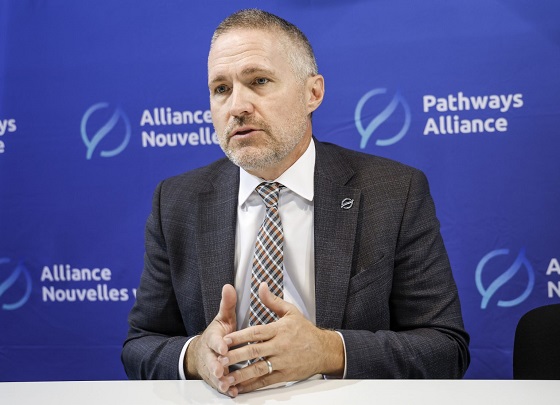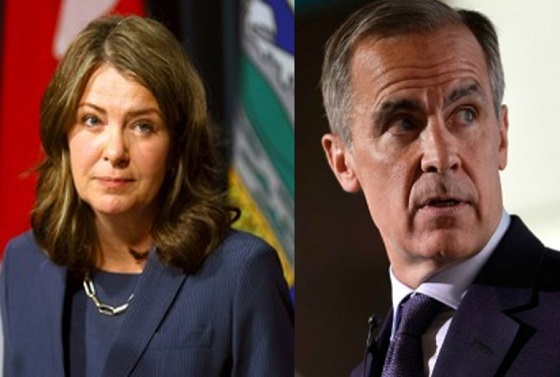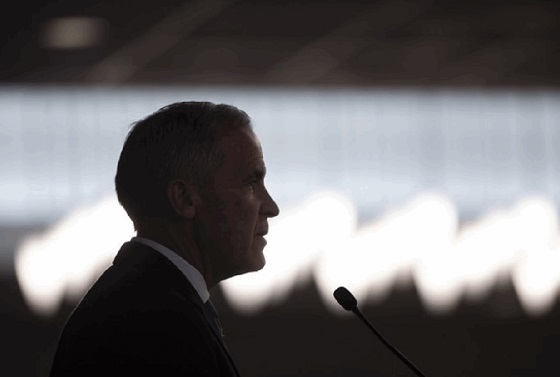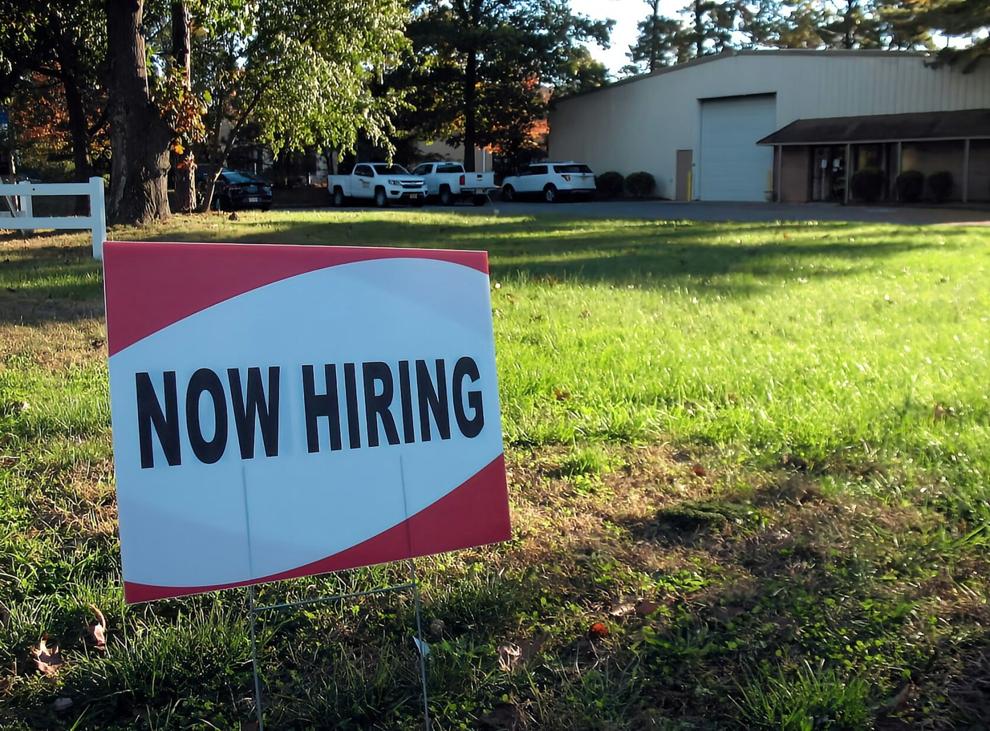Alberta
With a boost of up to $200 million from the Province, Inter Pipeline Ltd. investing $600 million in new petrochemical plant east of Edmonton

Premier Notley announces private investment in a new petrochemical upgrading facility alongside David Chappell (r), Patrick Bergen and Pyramid Prefab Piping staff.
From the Province of Alberta
Made-in-Alberta plan attracts new jobs, investment
Alberta is taking a significant step forward on a more diversified economy with a project that supports hundreds of jobs and adds more value to our energy resources.
If the plan is finalized, Inter Pipeline Ltd. would invest about $600 million in a new petrochemical upgrading facility that would produce more valuable consumer products derived from propane, including acrylic acid that is used in many everyday consumer products. This major private investment is unlocked by support from Premier Rachel Notley’s Made-in-Alberta energy diversification strategy.
The project would build on the company’s supply and knowledge of propylene, a product it already produces at the company’s other petrochemical facilities east of Edmonton. Construction would create about 600 jobs with another 50 long-term positions supporting the local economy once the facility is fully up and running.
“For decades, Albertans settled for less while new jobs and investment went south of the border. So we’re grabbing the bull by the horns, fighting for a Made-in-Alberta plan that represents the single largest energy diversification effort since the days of Peter Lougheed. We’re proud to support upgrading projects like Inter Pipeline’s because they mean more good jobs and top dollar for the energy resources that belong to all Albertans.”
Inter Pipeline’s supply of propylene, a gas that results from adding value to raw propane, creates the opportunity to further leverage Alberta’s natural resource strengths and extend the value chain. By producing acrylic acid used in things like adhesives, floor polishes and paints, this project increases the likelihood of attracting investments in more manufacturing facilities in the future.
“Alberta’s abundance of natural resources has positioned Inter Pipeline to invest in opportunities like this that build on our strengths to extend the value chain and make products that are in demand around the world. We want to commend this government for fostering the environment for companies like ours to grow and create jobs, while competitively positioning our business in the world market.”
The announcement was made at Pyramid Prefab Piping, one of the hundreds of companies across the province benefiting from the Made-in-Alberta strategy. As a manufacturer that employs about 45 people in Calgary, Pyramid was contracted to build key components for Inter Pipeline’s project already under construction.
“We’re pleased to see the government’s vision for the future is focused on jobs and diversification, which will lead to more work for companies like ours to build the components needed for energy upgrading projects. This growth means we can put even more skilled tradespeople to work in the Calgary region and contribute even more to the oil and gas sector.”
If finalized by Inter Pipeline, the private investment would be unlocked by provincial support of up to $70 million in future royalty credits under the Petrochemicals Diversification Program, which was first developed in early 2016.
Quick facts
- Inter Pipeline’s acrylic acid and propylene derivatives facility would be in Alberta’s Industrial Heartland, northeast of Edmonton. Construction is expected to begin in 2021.
- The facility would convert 60,000 tonnes per year of propylene and produce 80,000 tonnes per year of propylene derivatives, including acrylic acid, when operational.
- Acrylic acid is a value-added product used to make coatings, adhesives, diapers, floor polishes and paints.
- Roughly 50 skilled, local permanent jobs and 600 skilled trade construction jobs would be created.
- Inter Pipeline has already been approved to receive up to $200 million in future royalty credits from the first round of the Petrochemicals Diversification Program for the construction its $3.5-billion Heartland Petrochemical Complex.
Background
Made-in-Alberta energy strategy
- Premier Notley’s government is investing $3 billion to support energy diversification that creates jobs and adds value to our resources here at home.
- The focus is on two key areas: partial upgrading of our bitumen and petrochemical processing that adds value to natural gas and natural gas liquids.
- Overall, this commitment is expected to attract more than $25 billion in private-sector investment to Alberta and create more than 20,000 jobs.
Petrochemical upgrading
- Support for the Inter Pipeline facility is provided under the petrochemical portion of the Made-in-Alberta strategy.
- Two projects – owned by the Canada-Kuwait Petrochemical Corporation and Inter Pipeline Ltd. – were selected under the first round of this program, which was announced in 2016. The projects combined for $8 billion in private investment, creating more than 5,000 jobs.
- The government announced a second round of support for petrochemical upgrading in 2018.
- Nauticol’s methanol facility was previously selected under the second round of this program. The entire project is a $2-billion private investment in a plant near Grande Prairie, creating roughly 3,000 direct and indirect jobs.
- Albertans and Canadians use dozens of products every day that are based in part on petrochemicals like those from Alberta’s growing value-added industry including:
- polyester fabric couches, HD televisions, phones coffeemakers and computers
- car tires, engine hoses, gas, oil, radio components and seats
- desks, chairs, computers, carpets, cellphones and other office supplies
Partial upgrading of bitumen
- $1 billion in grants and loan guarantees to encourage companies to invest in new or expanded bitumen-upgrading facilities.
- Partial upgrading reduces the thickness of oil sands bitumen so it can flow through pipelines more easily, without having to be blended with diluent or as much diluent, a thinning agent. Benefits include:
- increased prices for our resources before shipping
- up to 30 per cent more capacity on existing pipelines
- more world refineries capable of processing our product
- cost savings on diluent for industry
- fewer emissions by removing high carbon content
Energy diversification timeline
- January 2016 – Royalty Review Advisory Panel recommended more value-add within the province, including partial upgrading
- February 2016 – Petrochemicals Diversification Program (PDP) introduced
- October 2016 – Energy Diversification Advisory Committee (EDAC) formed
- December 2016 – First PDP projects awarded
- December 2017 – Inter Pipeline finalized investment in petrochemical project
- February 2018 – EDAC reported back, including recommendation of partial upgrading, more PDP and additional support for petrochemical feedstock infrastructure
- March 2018 – Government launched programs through the Energy Diversification Act
- Fall 2018 – oil price differential hit crisis point. In response, government took several actions:
- Temporary limit on oil production
- Doubled support for PDP
- Began crude-by-rail negotiations
- Appointed LNG Investment Team
- Request for industry interest in building refining capacity
- January 2019 – Government announced letter of intent for first partial upgrading project awarded (Value Creation Inc.)
- February 2019 – Canada-Kuwait Petrochemical Corporation finalized investment in petrochemical project
- February 2019 – Premier announced crude-by-rail agreements
- February 2019 – Nauticol awarded first project under second round of PDP
Alberta
Alberta project would be “the biggest carbon capture and storage project in the world”

Pathways Alliance CEO Kendall Dilling is interviewed at the World Petroleum Congress in Calgary, Monday, Sept. 18, 2023.THE CANADIAN PRESS/Jeff McIntosh
From Resource Works
Carbon capture gives biggest bang for carbon tax buck CCS much cheaper than fuel switching: report
Canada’s climate change strategy is now joined at the hip to a pipeline. Two pipelines, actually — one for oil, one for carbon dioxide.
The MOU signed between Ottawa and Alberta two weeks ago ties a new oil pipeline to the Pathways Alliance, which includes what has been billed as the largest carbon capture proposal in the world.
One cannot proceed without the other. It’s quite possible neither will proceed.
The timing for multi-billion dollar carbon capture projects in general may be off, given the retreat we are now seeing from industry and government on decarbonization, especially in the U.S., our biggest energy customer and competitor.
But if the public, industry and our governments still think getting Canada’s GHG emissions down is a priority, decarbonizing Alberta oil, gas and heavy industry through CCS promises to be the most cost-effective technology approach.
New modelling by Clean Prosperity, a climate policy organization, finds large-scale carbon capture gets the biggest bang for the carbon tax buck.
Which makes sense. If oil and gas production in Alberta is Canada’s single largest emitter of CO2 and methane, it stands to reason that methane abatement and sequestering CO2 from oil and gas production is where the biggest gains are to be had.
A number of CCS projects are already in operation in Alberta, including Shell’s Quest project, which captures about 1 million tonnes of CO2 annually from the Scotford upgrader.
What is CO2 worth?
Clean Prosperity estimates industrial carbon pricing of $130 to $150 per tonne in Alberta and CCS could result in $90 billion in investment and 70 megatons (MT) annually of GHG abatement or sequestration. The lion’s share of that would come from CCS.
To put that in perspective, 70 MT is 10% of Canada’s total GHG emissions (694 MT).
The report cautions that these estimates are “hypothetical” and gives no timelines.
All of the main policy tools recommended by Clean Prosperity to achieve these GHG reductions are contained in the Ottawa-Alberta MOU.
One important policy in the MOU includes enhanced oil recovery (EOR), in which CO2 is injected into older conventional oil wells to increase output. While this increases oil production, it also sequesters large amounts of CO2.
Under Trudeau era policies, EOR was excluded from federal CCS tax credits. The MOU extends credits and other incentives to EOR, which improves the value proposition for carbon capture.
Under the MOU, Alberta agrees to raise its industrial carbon pricing from the current $95 per tonne to a minimum of $130 per tonne under its TIER system (Technology Innovation and Emission Reduction).
The biggest bang for the buck
Using a price of $130 to $150 per tonne, Clean Prosperity looked at two main pathways to GHG reductions: fuel switching in the power sector and CCS.
Fuel switching would involve replacing natural gas power generation with renewables, nuclear power, renewable natural gas or hydrogen.
“We calculated that fuel switching is more expensive,” Brendan Frank, director of policy and strategy for Clean Prosperity, told me.
Achieving the same GHG reductions through fuel switching would require industrial carbon prices of $300 to $1,000 per tonne, Frank said.
Clean Prosperity looked at five big sectoral emitters: oil and gas extraction, chemical manufacturing, pipeline transportation, petroleum refining, and cement manufacturing.
“We find that CCUS represents the largest opportunity for meaningful, cost-effective emissions reductions across five sectors,” the report states.

Fuel switching requires higher carbon prices than CCUS.
Measures like energy efficiency and methane abatement are included in Clean Prosperity’s calculations, but again CCS takes the biggest bite out of Alberta’s GHGs.
“Efficiency and (methane) abatement are a portion of it, but it’s a fairly small slice,” Frank said. “The overwhelming majority of it is in carbon capture.”

From left, Alberta Minister of Energy Marg McCuaig-Boyd, Shell Canada President Lorraine Mitchelmore, CEO of Royal Dutch Shell Ben van Beurden, Marathon Oil Executive Brian Maynard, Shell ER Manager, Stephen Velthuizen, and British High Commissioner to Canada Howard Drake open the valve to the Quest carbon capture and storage facility in Fort Saskatchewan Alta, on Friday November 6, 2015. Quest is designed to capture and safely store more than one million tonnes of CO2 each year an equivalent to the emissions from about 250,000 cars. THE CANADIAN PRESS/Jason Franson
Credit where credit is due
Setting an industrial carbon price is one thing. Putting it into effect through a workable carbon credit market is another.
“A high headline price is meaningless without higher credit prices,” the report states.
“TIER credit prices have declined steadily since 2023 and traded below $20 per tonne as of November 2025. With credit prices this low, the $95 per tonne headline price has a negligible effect on investment decisions and carbon markets will not drive CCUS deployment or fuel switching.”
Clean Prosperity recommends a kind of government-backstopped insurance mechanism guaranteeing carbon credit prices, which could otherwise be vulnerable to political and market vagaries.
Specifically, it recommends carbon contracts for difference (CCfD).
“A straight-forward way to think about it is insurance,” Frank explains.
Carbon credit prices are vulnerable to risks, including “stroke-of-pen risks,” in which governments change or cancel price schedules. There are also market risks.
CCfDs are contractual agreements between the private sector and government that guarantees a specific credit value over a specified time period.
“The private actor basically has insurance that the credits they’ll generate, as a result of making whatever low-carbon investment they’re after, will get a certain amount of revenue,” Frank said. “That certainty is enough to, in our view, unlock a lot of these projects.”
From the perspective of Canadian CCS equipment manufacturers like Vancouver’s Svante, there is one policy piece still missing from the MOU: eligibility for the Clean Technology Manufacturing (CTM) Investment tax credit.
“Carbon capture was left out of that,” said Svante co-founder Brett Henkel said.
Svante recently built a major manufacturing plant in Burnaby for its carbon capture filters and machines, with many of its prospective customers expected to be in the U.S.
The $20 billion Pathways project could be a huge boon for Canadian companies like Svante and Calgary’s Entropy. But there is fear Canadian CCS equipment manufacturers could be shut out of the project.
“If the oil sands companies put out for a bid all this equipment that’s needed, it is highly likely that a lot of that equipment is sourced outside of Canada, because the support for Canadian manufacturing is not there,” Henkel said.
Henkel hopes to see CCS manufacturing added to the eligibility for the CTM investment tax credit.
“To really build this eco-system in Canada and to support the Pathways Alliance project, we need that amendment to happen.”
Resource Works News
Alberta
Alberta Next Panel calls for less Ottawa—and it could pay off

From the Fraser Institute
By Tegan Hill
Last Friday, less than a week before Christmas, the Smith government quietly released the final report from its Alberta Next Panel, which assessed Alberta’s role in Canada. Among other things, the panel recommends that the federal government transfer some of its tax revenue to provincial governments so they can assume more control over the delivery of provincial services. Based on Canada’s experience in the 1990s, this plan could deliver real benefits for Albertans and all Canadians.
Federations such as Canada typically work best when governments stick to their constitutional lanes. Indeed, one of the benefits of being a federalist country is that different levels of government assume responsibility for programs they’re best suited to deliver. For example, it’s logical that the federal government handle national defence, while provincial governments are typically best positioned to understand and address the unique health-care and education needs of their citizens.
But there’s currently a mismatch between the share of taxes the provinces collect and the cost of delivering provincial responsibilities (e.g. health care, education, childcare, and social services). As such, Ottawa uses transfers—including the Canada Health Transfer (CHT)—to financially support the provinces in their areas of responsibility. But these funds come with conditions.
Consider health care. To receive CHT payments from Ottawa, provinces must abide by the Canada Health Act, which effectively prevents the provinces from experimenting with new ways of delivering and financing health care—including policies that are successful in other universal health-care countries. Given Canada’s health-care system is one of the developed world’s most expensive universal systems, yet Canadians face some of the longest wait times for physicians and worst access to medical technology (e.g. MRIs) and hospital beds, these restrictions limit badly needed innovation and hurt patients.
To give the provinces more flexibility, the Alberta Next Panel suggests the federal government shift tax points (and transfer GST) to the provinces to better align provincial revenues with provincial responsibilities while eliminating “strings” attached to such federal transfers. In other words, Ottawa would transfer a portion of its tax revenues from the federal income tax and federal sales tax to the provincial government so they have funds to experiment with what works best for their citizens, without conditions on how that money can be used.
According to the Alberta Next Panel poll, at least in Alberta, a majority of citizens support this type of provincial autonomy in delivering provincial programs—and again, it’s paid off before.
In the 1990s, amid a fiscal crisis (greater in scale, but not dissimilar to the one Ottawa faces today), the federal government reduced welfare and social assistance transfers to the provinces while simultaneously removing most of the “strings” attached to these dollars. These reforms allowed the provinces to introduce work incentives, for example, which would have previously triggered a reduction in federal transfers. The change to federal transfers sparked a wave of reforms as the provinces experimented with new ways to improve their welfare programs, and ultimately led to significant innovation that reduced welfare dependency from a high of 3.1 million in 1994 to a low of 1.6 million in 2008, while also reducing government spending on social assistance.
The Smith government’s Alberta Next Panel wants the federal government to transfer some of its tax revenues to the provinces and reduce restrictions on provincial program delivery. As Canada’s experience in the 1990s shows, this could spur real innovation that ultimately improves services for Albertans and all Canadians.
-

 International17 hours ago
International17 hours agoOttawa is still dodging the China interference threat
-

 Business15 hours ago
Business15 hours agoThere’s No Bias at CBC News, You Say? Well, OK…
-

 Automotive14 hours ago
Automotive14 hours agoCanada’s EV gamble is starting to backfire
-

 International16 hours ago
International16 hours ago2025: The Year The Narrative Changed
-

 Fraser Institute1 day ago
Fraser Institute1 day agoCarney government sowing seeds for corruption in Ottawa
-

 Business1 day ago
Business1 day agoResidents in economically free states reap the rewards
-

 Daily Caller1 day ago
Daily Caller1 day agoWhile Western Nations Cling to Energy Transition, Pragmatic Nations Produce Energy and Wealth
-

 Alberta1 day ago
Alberta1 day agoAlberta Next Panel calls for less Ottawa—and it could pay off







